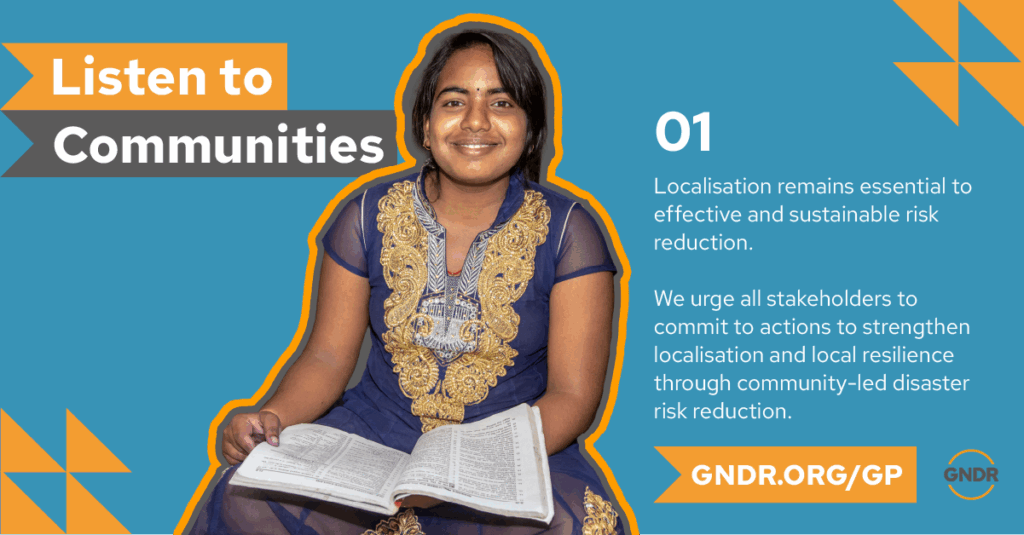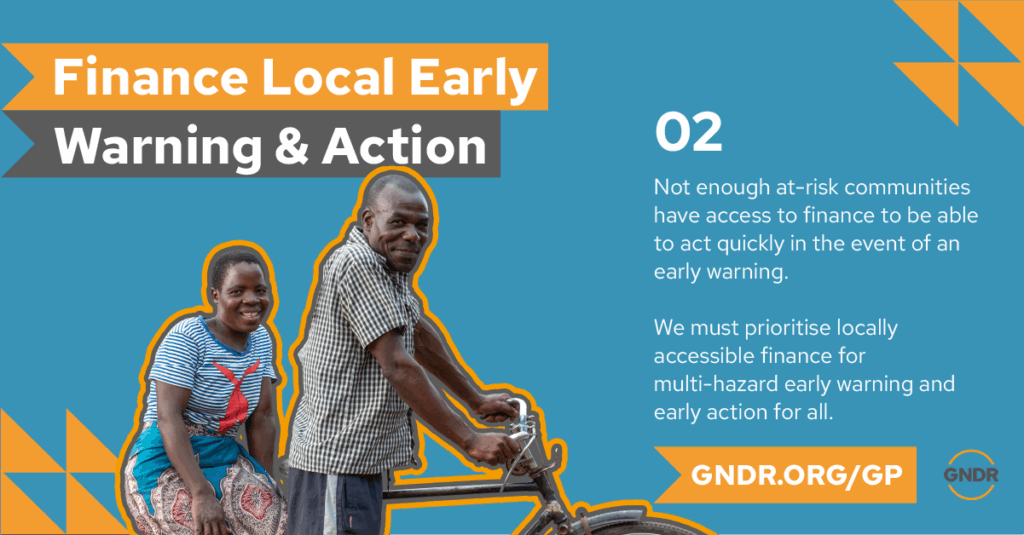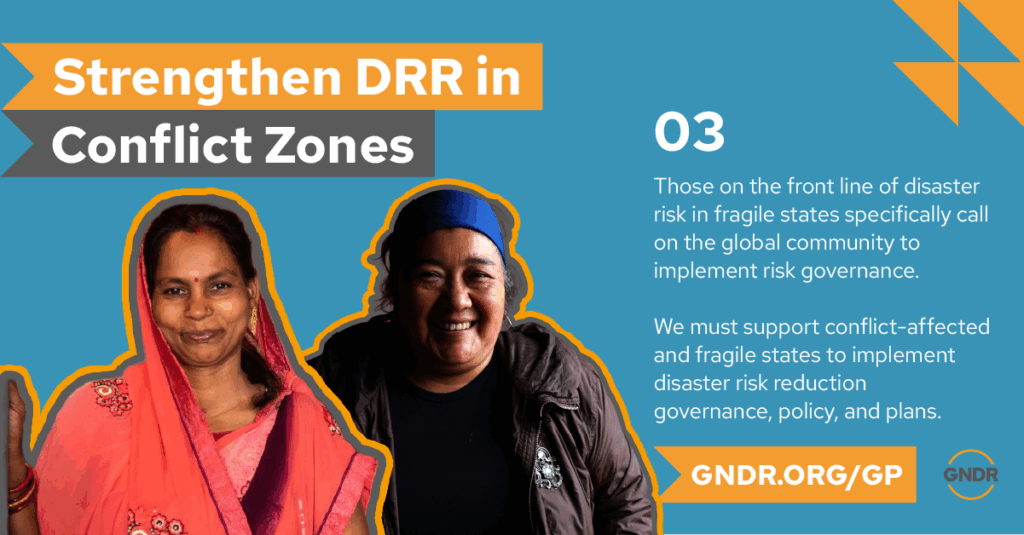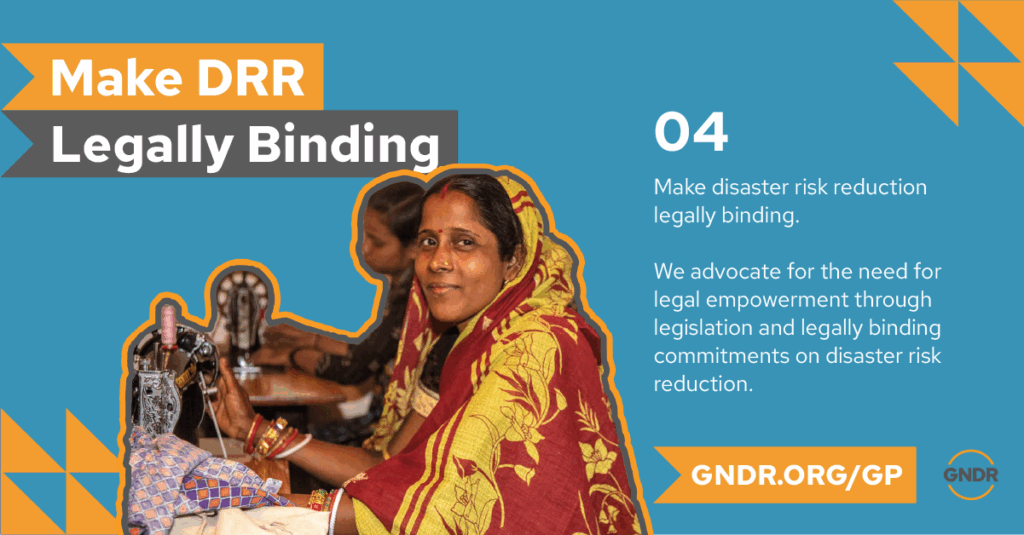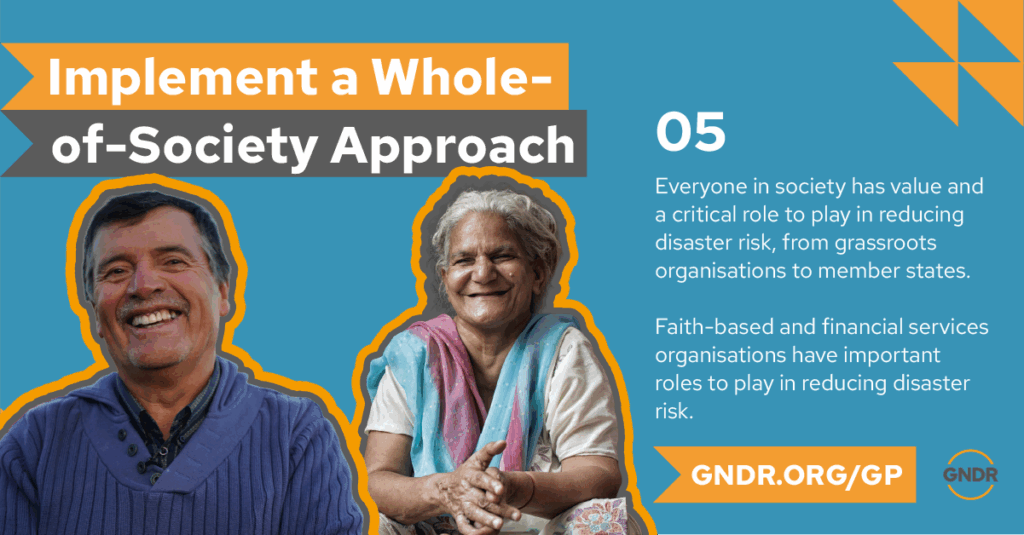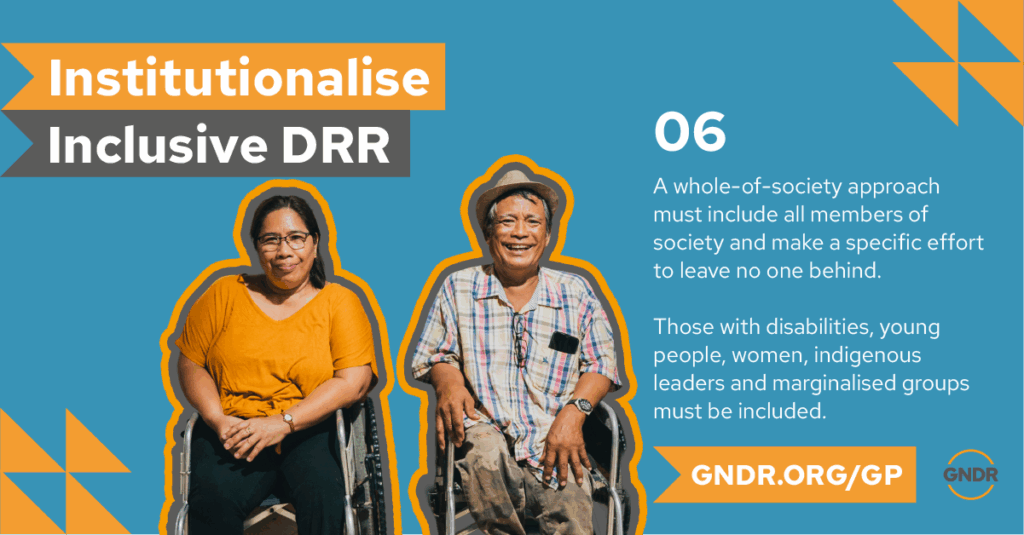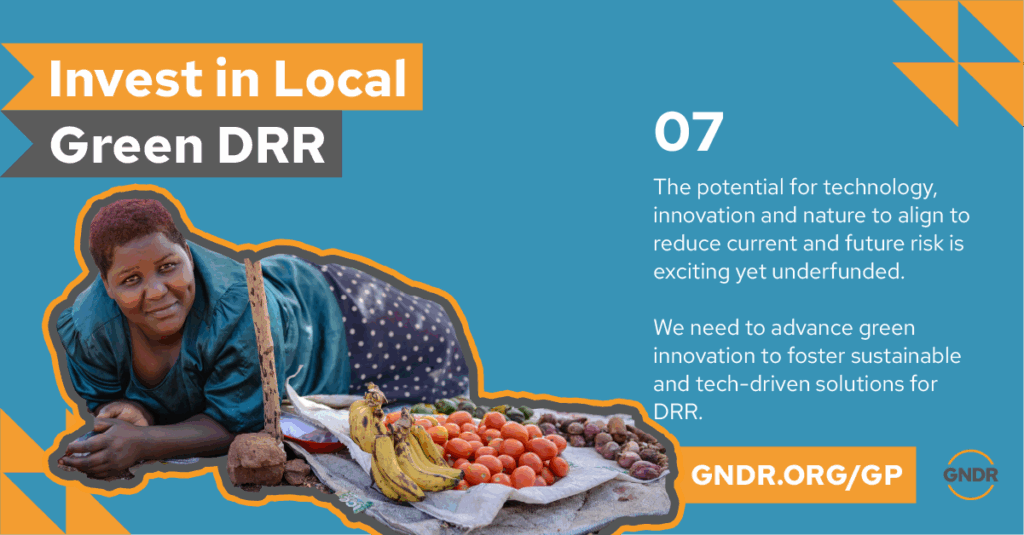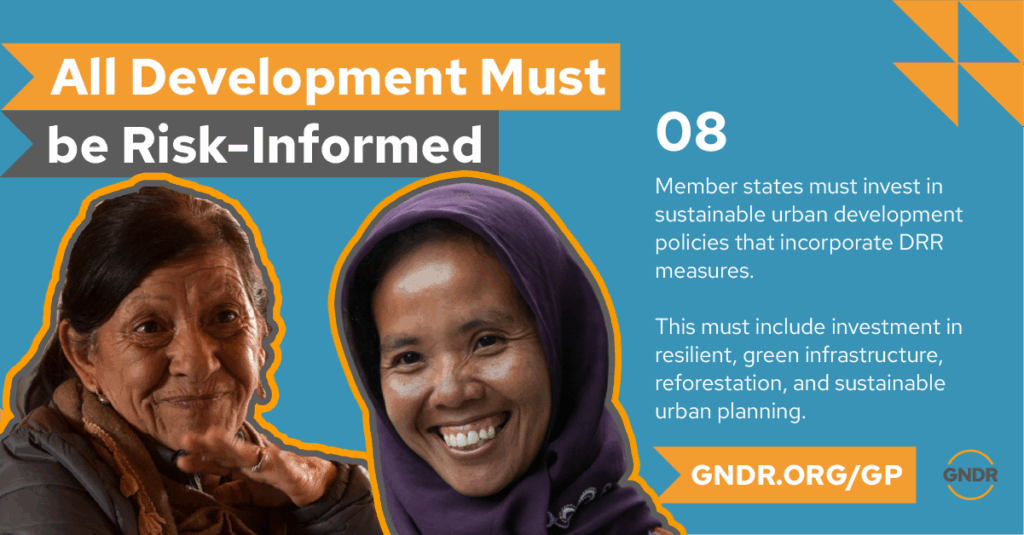Call to Action for the 8th Session of the Global Platform for Disaster Risk Reduction (GPDRR)
Ahead of the Global Platform for Disaster Risk Reduction 2025, our members have identified eight key areas for action that global decision makers, member states and fellow civil society organisations need to work together on.
You can get involved in supporting our calls to action by downloading the images below and sharing them on social media.
GNDR urges all stakeholders to champion (1) localisation, (2) risk-informed development, and (3) civil society led collaboration for the meaningful implementation of an all of society approach to disaster risk reduction.
Specifically, GNDR calls for global decision makers to support and champion the following messages with members states:
